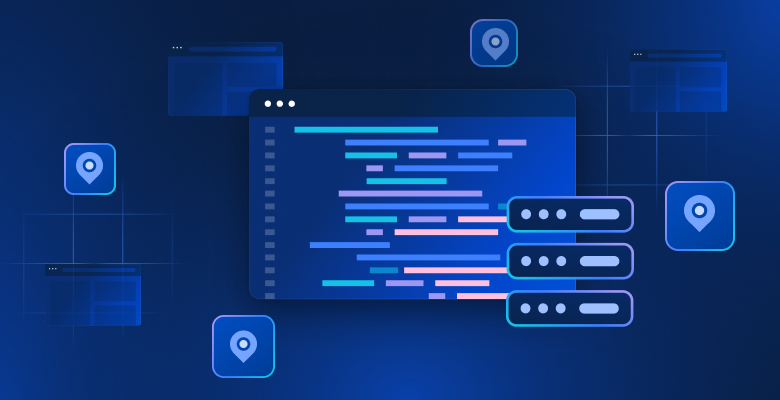In e-commerce, staying competitive often means staying flexible, especially when it comes to pricing. Learn everything about dynamic pricing, a strategy that has transformed the way businesses approach their pricing models.
Let’s dive into what dynamic pricing is, explore its benefits and challenges, and discuss how e-commerce businesses can leverage this strategy effectively.
What Is Dynamic Pricing?
Dynamic pricing is a pricing strategy where prices are adjusted in real-time based on market demand, competition, and other different factors, usually backed up by data. This approach allows businesses to respond quickly to market changes, maximizing profits and staying competitive. From the travel industry to online retail, dynamic pricing is everywhere, shaping our buying experiences in ways we might not even notice.
Dynamic pricing doesn’t happen on its own. The chosen pricing strategy is directly impacted by data, whether it’s competitor pricing, available inventory, and more. We are going to discuss the ways of obtaining that data in-depth in the following sections.
Benefits of Dynamic Pricing for E-commerce
There are many different benefits, let’s go over the most important ones.
- Maximizing Profits: Dynamic pricing isn’t just about increasing prices; it’s a nuanced approach to pricing strategy. By lowering or raising prices based on demand, businesses can maximize revenue during peak times and stimulate sales when demand wanes. This elasticity ensures that revenue is optimized across different market conditions.
- Competitive Edge: In the competitive landscape of e-commerce, staying ahead often means adapting quickly. Dynamic pricing provides a mechanism for businesses to remain agile, allowing them to adjust their pricing in real-time to remain competitive. This responsiveness can be the difference between a customer choosing your business over a competitor.
- Enhanced Customer Segmentation: By employing dynamic pricing, e-commerce platforms can cater to a broad spectrum of customer segments. Different pricing for different segments or even personalized pricing allows businesses to appeal more directly to various consumer groups, enhancing the chances of conversion and fostering customer loyalty.
- Inventory Management: Beyond just a pricing tool, dynamic pricing serves as an inventory management strategy. By adjusting prices based on current stock levels, businesses can encourage the sale of overstocked items and ensure that no product stays on the shelves for too long. This proactive approach to inventory management helps maintain a healthy balance between supply and demand.
Businesses can reach the benefits listed above by either developing their in-house data operations or by using a 3rd party provider.
Challenges and Considerations
Dynamic pricing has its fair share of challenges, particularly in how customers view your pricing strategies and the technicalities involved in setting it up.
- Customer Perception: The main risk with dynamic pricing lies in how your customers react. If they notice that prices fluctuate too often or that someone else got a better deal for the same product, they might feel cheated. This can hurt your brand’s reputation and loyalty. The key challenge is implementing dynamic pricing in a way that still feels fair to your customers.
- Complexity in Implementation: Setting up a dynamic pricing model isn’t straightforward. You need to collect and analyze a lot of data about market trends, competitor prices, and customer behavior. This process can get complex, requiring advanced technology and analytics skills. For many businesses, especially smaller ones, the challenge is both in the collection of this data and in making sense of it in real-time to adjust pricing accurately.
These challenges can be addressed quite easily by following a set of simple rules and by conducting thorough research on 3rd party tools or in-house development costs.
Fueling Dynamic Pricing: The Role of Data
At the heart of dynamic pricing lies data—lots of it. Understanding market trends, competitor pricing, and customer behavior is crucial, and this is where web scraping and datasets come into play. Web scraping at scale allows businesses to gather vast amounts of data from various sources, providing the insights needed to inform their pricing strategies. For those looking for a more straightforward approach, purchasing ready-made datasets that are updated regularly can offer a wealth of information with minimal effort.
Alternatively, you can develop an in-house scraping operation.
Leveraging Bright Data’s Solutions
It’s essential to highlight how Bright Data’s web scraping services and comprehensive datasets can empower e-commerce businesses with data to implement dynamic pricing effectively. Our scalable web scraping APIs can automate data collection processes, ensuring businesses have access to real-time market and competitor insights. Additionally, our ready-to-use datasets can serve as a foundation for those looking to jumpstart their dynamic pricing strategy without the hassle of collecting data themselves.
In addition to the advanced data services provided, Bright Data also offers the infrastructure required to run a successful web scraping operation – top quality proxy services. By utilizing Bright Data’s proxy networks, you ensure that your in-house data collection operation runs smoothly, without blocks or limitations. Looking for advanced CAPTCHA solving and fingerprint optimization? Check out the Web Unlocker.
In Conclusion
Dynamic pricing represents a powerful tool for e-commerce businesses aiming to stay competitive and maximize profitability. While it comes with its set of challenges, the strategic use of data to inform pricing decisions can mitigate many of these concerns. By leveraging services like those offered by Bright Data, like automated web scrapers and custom datasets, businesses can access the critical data needed to make informed dynamic pricing decisions, ultimately leading to greater success in the digital marketplace.
Not sure how Bright Data’s products can help your business? Contact us today to find the perfect solution and receive a data sample tailored to your needs.








